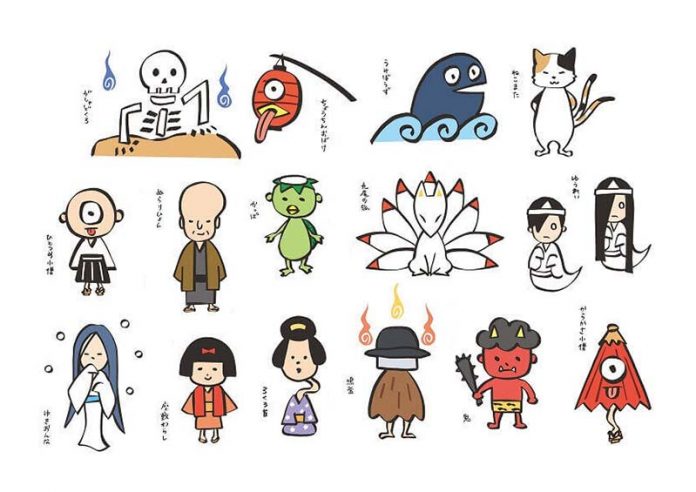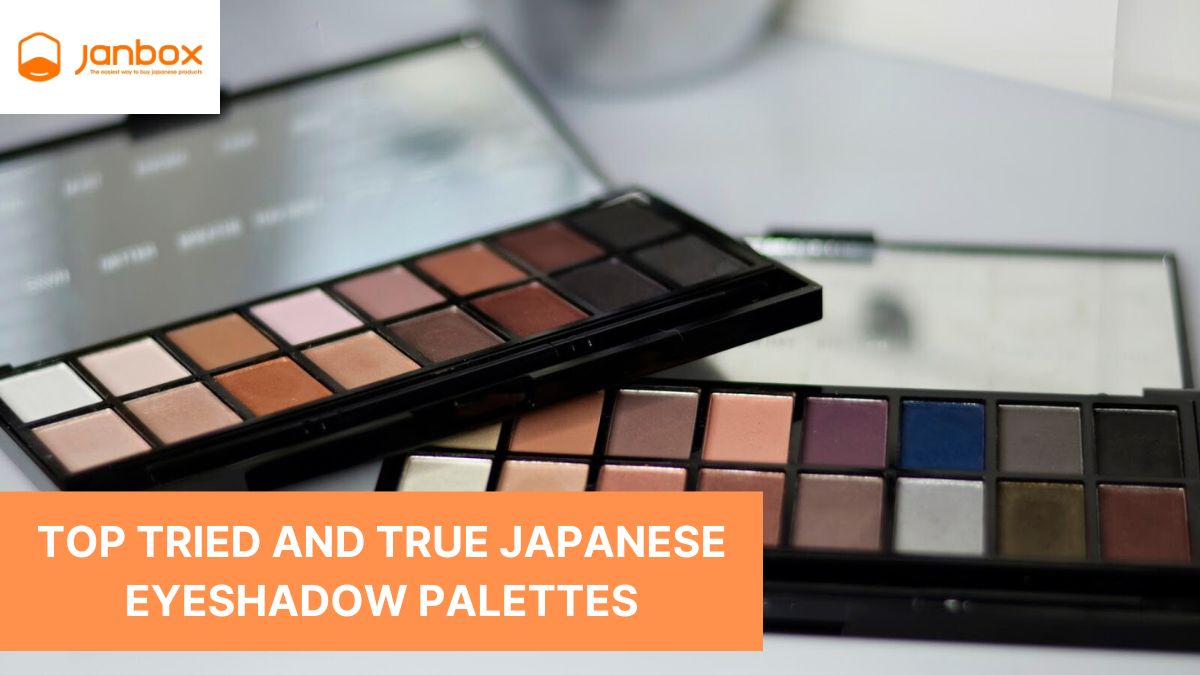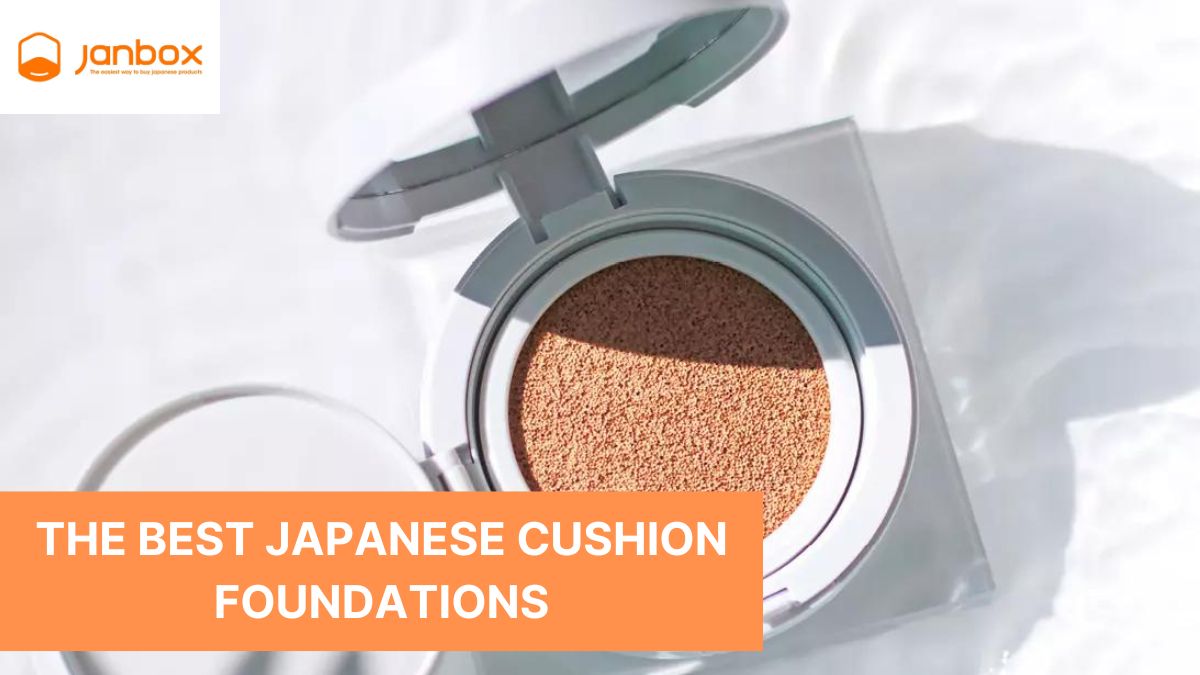Japanese customs and history are renowned for their vibrancy and depth. Strange, paranormal, and spooky occurrences have been influencing Japanese tradition for ages. Yokai in Japanese folklore are odd, elusive supernatural creatures. Their origins of them are the subject of several tales and folklore. You may get more fascinating details about Japanese demon names and the list of traditional Japanese yokai in this article.
What is Yokai in Japanese culture?
Yokai meaning in Japanese is a category of supernatural creatures. The characters meaning “bewitching,” “attractive,” “calamity,” “specter,” “apparition,” “mystery,” and “suspicious” make up the term “Yōkai”. Japanese Yokai folklore may also go by the names Ayakashi, Mononoke, or Mamono. Yōkai can be anything from malicious to naughty, or they might occasionally provide luck to people who come upon them.
Yōkai frequently resembles animals (such as the kappa, which resembles a turtle, or the tengu, which has wings), while some mostly resemble humans. Some Yōkai (such as Tsukumogami) have an indistinct form, while others resemble inanimate items. Shapeshifting is the most typical supernatural or spiritual ability possessed by Yōkai.

Shapeshifting Yōkai is referred to as Bakemono (化物) or Obake (お化け). Yōkai is personifications of “supernatural or unexplained happenings to their informants,” according to Japanese folklorists and historians.
Many painters of the Edo period, like Toriyama Sekien, created new Yōkai by drawing ideas from myths or just their own imaginations. Today, all Japanese Yōkai are mistakenly thought to have their roots in older mythology (such as Kameosa and Amikiri) that are fabricated.
>>> Read more: How to buy from Yahoo Auctions Japan? – Janbox Japanese Proxy Service
The history of Yokai
Although the Japanese Yokai folklore had long been a part of the legend, it wasn’t until the Edo era (17th–19th centuries) that they started to appear often in works of art. Their ascent to the top of creative culture began at a period when the printing press and publishing technologies became widely used, which is no accident.
The Hyakki Yagyo Zu, a 16th-century scroll that showed a riot of Japanese monsters, is one of the first instances of yokai art. This served as the foundation for the first comprehensive reference work on yokai figures in Japan, which was created by 18th-century painter Toriyama Sekien. In his own catalogs for the monster parade, Sekien was able to mass-produce yokai pictures using the newly invented woodblock printing techniques.
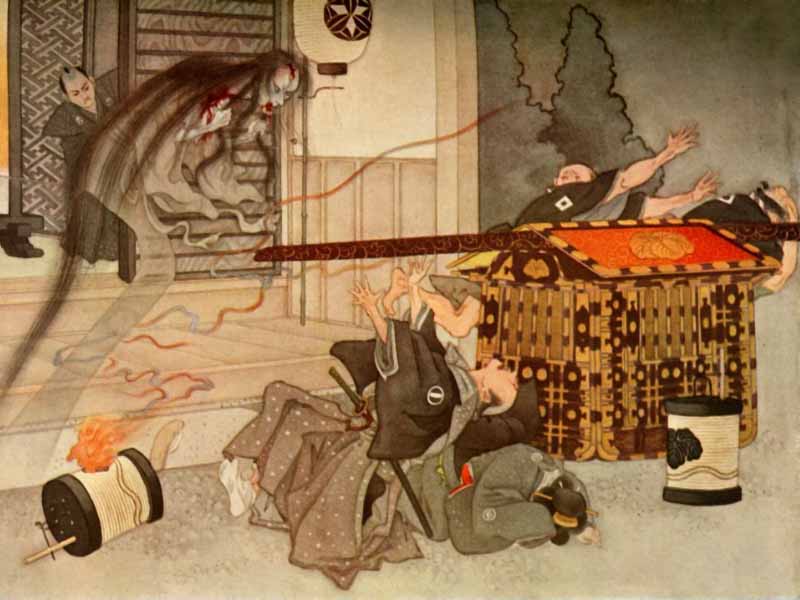
Illustrated Night Parade of a Hundred Spirits is what the series was called; its full name is the Gazu Hyakki Yagyo series. More than 200 of these traditional Japanese Yokai are shown in these three works, each with a brief synopsis and commentary.
>>> Read more: 25+ Best Cute Anime Cat Girl Of All Time [Updated]
The list of Japanese Yokai
Yokai, highly well-liked supernatural beings from Japanese mythology, have also dominated popular culture in areas including film, music, and video games like Yo-kai Watch, which is particularly well-liked among young people in Japan. Therefore, it is only understandable that many readers and Japanese culture enthusiasts want to learn more about these enigmatic animals from the Land of the Rising Sun. Let’s begin by looking at the list of Japanese Yokai.
1. Amabie
Amabie is a yokai that resembles a mermaid and has a combination of human and fish traits. It has a scaly body and lengthy hair. It has three legs and a mouth like a beak. It emits a strong light that is visible from the coast which makes it shine. They are lucky objects so maintaining an Amabie image will guard you against illness.
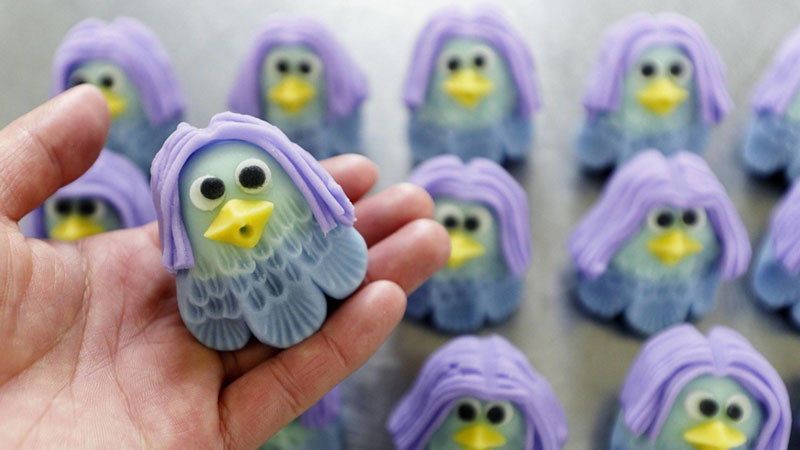
2. Ijū
Ijū is a large, powerful, hairy monster who dwells far up in the mountains. They have long, hairy manes that fall down their backs, are bigger than humans, and resemble monkeys.
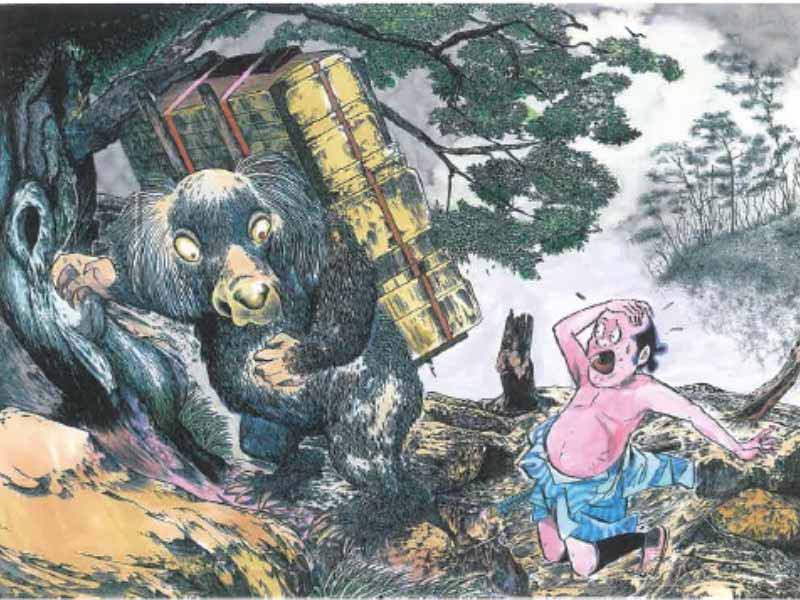
3. Kappa
Aquatic, reptilian humanoids known as kappa live in Japan’s rivers and streams. They are awkward on land but comfortable in the water, where they thrive in the warmer months. Kappa is typically human children’s size and form, however, despite their little size, they have more physical strength than an adult male. Their scaly skin is a variety of vivid reds, blues, and earthy greens. The kappa body is designed for swimming. It has webbed, thumbless hands and feet, a beak that resembles a turtle’s shell, and a waterproof, stretchy skin that smells like fish and is purported to be detachable.
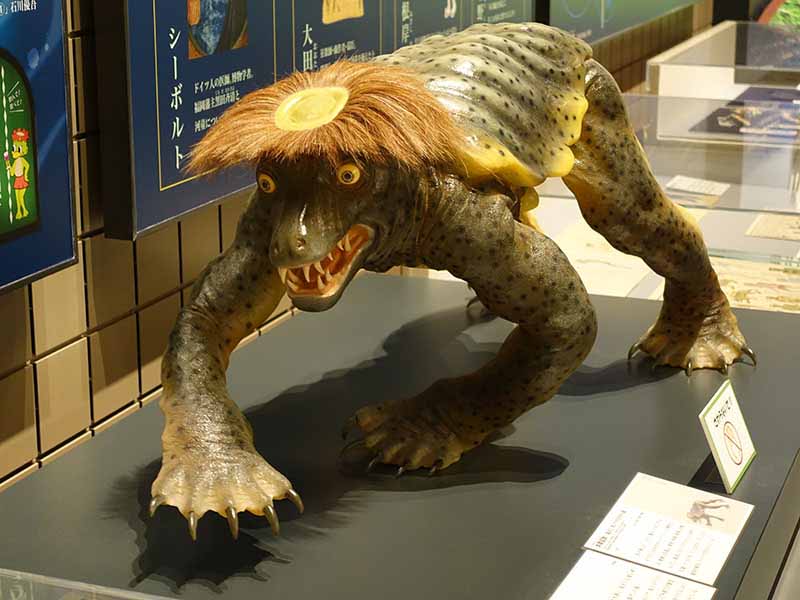
In addition, they have three anuses that enable them to expel three times as much gas as humans do, and their forearms are joined together within their shells so that tugging on one lengthens it while pulling on the other contracts. But the feature that sets them apart most is a depression that resembles a dish on top of their skulls. A kappa’s power comes from this dish, which must always be kept full of water. The kappa won’t be able to move if the water spills and the dish dries up. even pass away.
4. Kirin
One of the most elusive, magnificent, and potent animals ever found in East Asia is the kirin. It is a majestic animal that is respected and holy. The kirin is frequently regarded as a deity unto itself. The kirin is a chimerical creature that resembles a deer and has scales covering its body that resemble dragon scales. It has a mane that flows and an ox-like tail. Its face is the epitome of complete peace while its body and mane are coated in dazzling, holy fire.
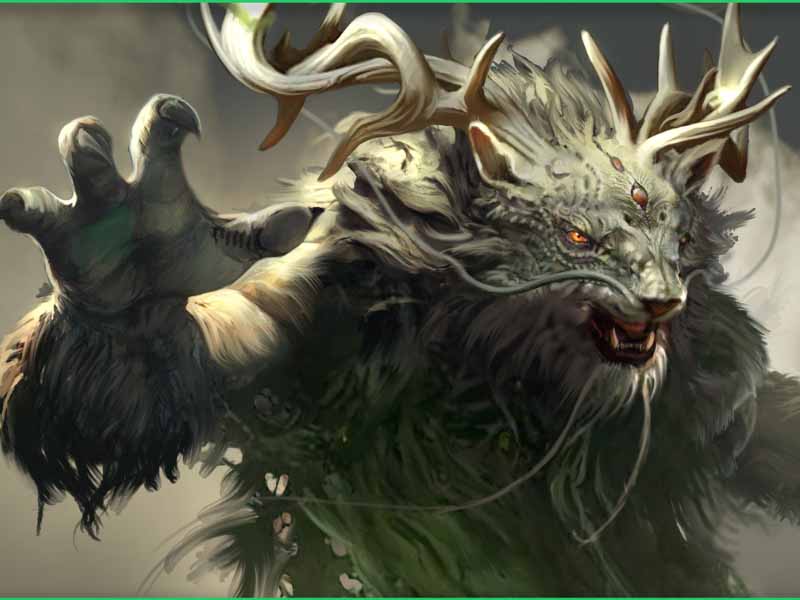
5. Ningyo
Japanese mermaids are known as Ningyo, however, they differ greatly from the mermaids of Western mythology. Ningyo from the Pacific Ocean and the Sea of Japan are abhorrent to sight, unlike the mermaids of the Atlantic Ocean and the Mediterranean Sea. They are ethereal horrors rather than beguiling sirens. More fish than humans, Ningyo. From hideous, distorted fish-like features to whole human torsos with long, bony fingers and pointed claws, they can have anything. Ningyo can be as big as a giant seal or a young toddler.
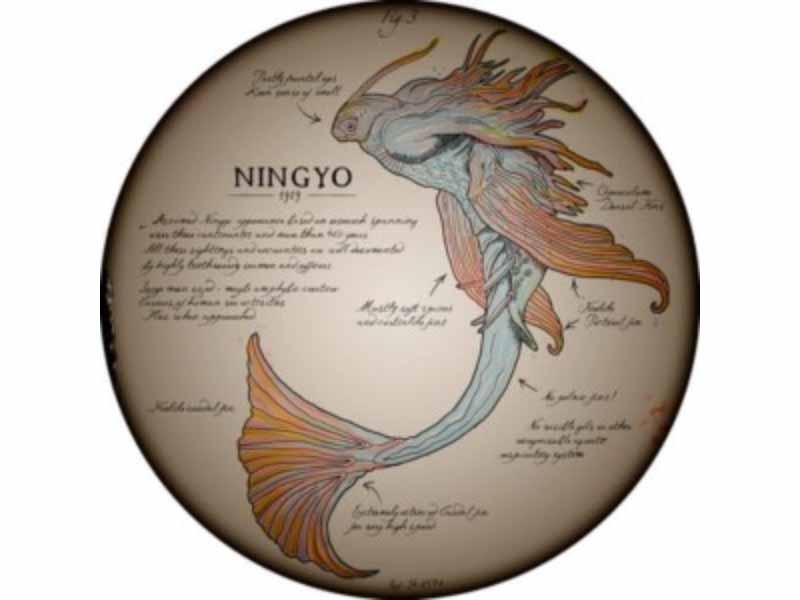
Nowadays, mermaids with a desirable human torso and a fish-like lower body, like the breeds well-known across the West, are not unheard of on the Japanese islands. The popularity of Ningyo in Japan which resemble Western-style Atlantic mermaids has increased since the end of the Edo era and the opening of Japan to the West. The conventional Japanese mermaid, however, is more beast than beauty.
>>> Read more: Mugiwara Store – Big Fans of One Piece Must Know
6. Oni
One of the greatest symbols in Japanese mythology is the Oni. They are big and frightening, sometimes even bigger than trees and taller than the tallest man. They vary in a wide variety, but the features that are most frequently shown include red or blue skin, wild hair, two or more horns, and tusks that resemble fangs.

There are further versions with various colors and numbers of horns, eyes, fingers, and toes. They dress in loincloths fashioned from the fur of large animals. All oni are exceptionally strong and resilient, and many of them are skilled sorcerers. They are fierce demons who cause misfortune, spread illness, and torment the damned in hell.
7. Tanuki
The tanuki and kitsune are the two most well-known yokai animals. The tanuki also referred to as a raccoon dog in English, is a special breed of East Asian dog that resembles a badger or a raccoon. The Japanese islands are all home to these timid, nocturnal creatures. Tanuki figurines are a common ornament in homes and retail establishments. They are adored for their sweetness as well as the stories of mischief and cunning that surround them.
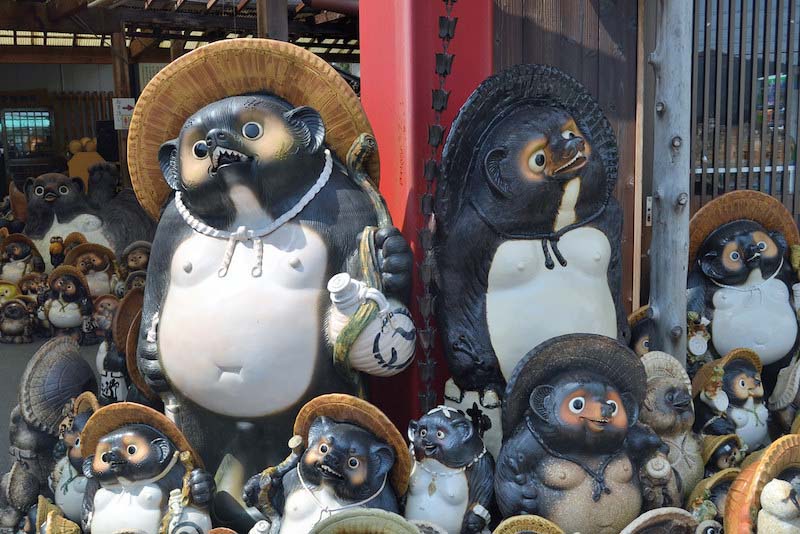
8. Tatsu
Tatsu, or Japanese dragons, resemble dragons seen in China and other parts of the world in appearance. They frequently feature horns, antlers, spines, and beards in addition to long, scaled bodies, serpentine tails, keen fangs, and claws. Some Tatsu creatures have many heads or limbs. Many hide among us and never appear in their true forms.
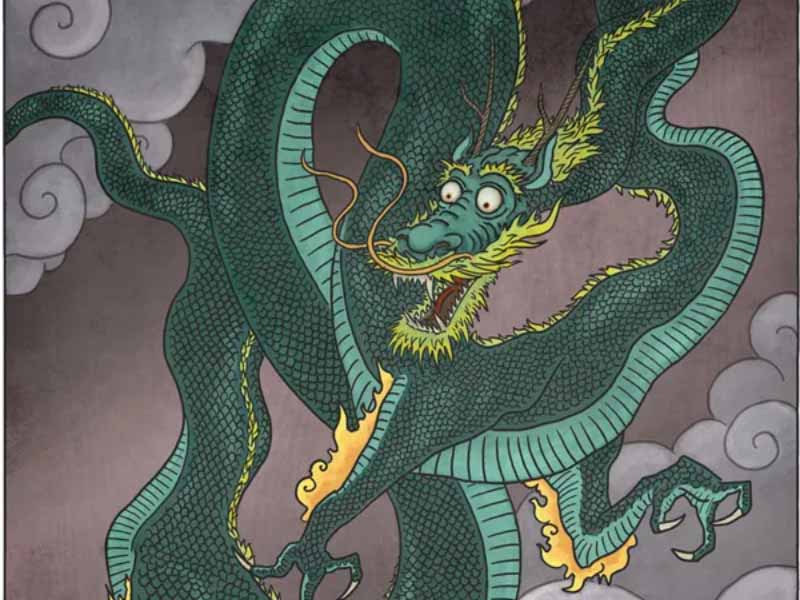
9. Tengu Daoshi
Deep within the forest, there is an acoustic phenomenon known as tengu daoshi. It may be identified by the sound of a big tree falling and the violent vibrations it makes when it strikes the forest floor. Frequently, a strong wind gust comes along with it.

10. Tsuchigumo
Tsuchigumo, also known as the purse web spider, is widespread around the world including on all of the Japanese islands. Tsuchigumo who lived for a long time can change into yokai. They develop into huge creatures that can take down much bigger prey, even people.
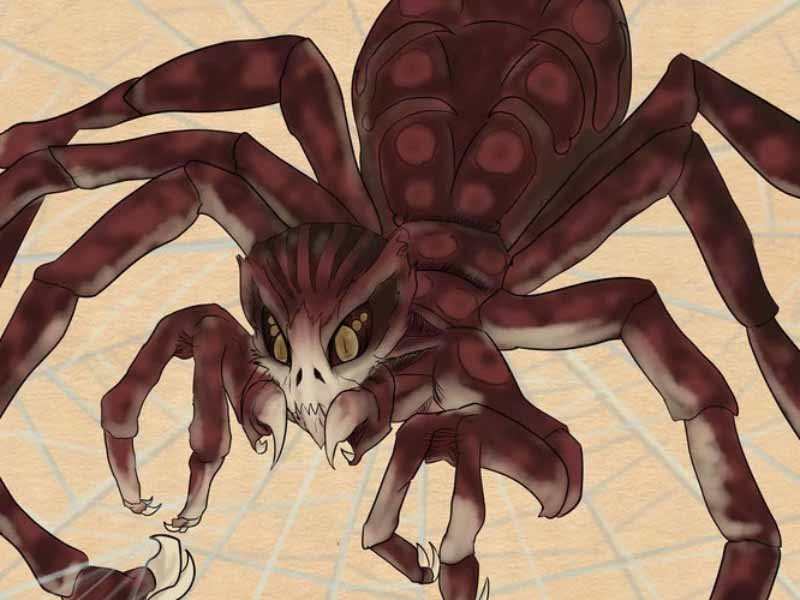
>>> Read more: Top 10 Best Japanese Traditional Toys You Should Not Miss
11. Yako / Kitsune
Foxes, sometimes known as kitsune, are widespread throughout Japan. Except for their amazing magical abilities, they are exactly like wild foxes seen everywhere in the world. The majority of people really adore them because of their little stature and adorable looks.
Kitsune comes in two main varieties. The Shinto god Inari is served by holy foxes, which are shown in sculptures and other forms throughout the shrines dedicated to him. Legends claim that celestial foxes helped righteous and devout individuals by offering insight or assistance. These holy foxes serve as intermediaries between the heavenly and human realms and as gods’ messengers. They frequently ward off evil spirits, provide luck, and safeguard people or locations.

The wild foxes, which like trouble, pranks, or wickedness, are more prevalent. There are rumors that claim wild foxes may deceive people or even possess them, causing them to act abnormally. Despite their evil character, feral foxes honor their commitments, cherish their relationships, and return favors.
12. Yamanba / Yamauba
The Japanese highlands and woodlands are home to the legendary Yamauba old hags and witches. They were once people, but they were tainted and turned into monsters. Although some have horns or fangs, most Yamaubas are merely average, good-natured elderly ladies who don’t show any signs of evil until they strike.
Occasionally providing shelter, food, and a place to sleep for tired visitors, the Yamauba live alone in huts beside the road. When their visitors are sound asleep late at night, Yamauba becomes their actual form (an ugly, elderly, wicked witch). Thus uncovered, they attempt to capture and consume their visitors, frequently employing strong magic.
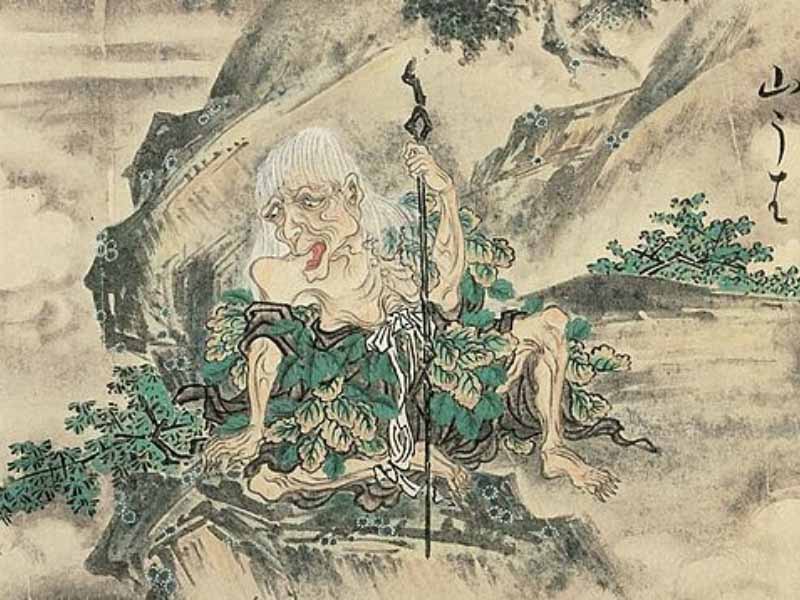
Those few visitors who were fortunate enough to escape have told others about their encounters with Yamauba. After being passed down through the centuries, these stories eventually started to be recounted as bedtime stories to children who disobeyed their parents: “Be nice or Yamauba will come to get you!”
13. Yuki Onna
Yuki Onna prey on tourists who become disoriented in the blizzards that cover the Japanese Alps in winter. They have long black hair and dark, piercing eyes, giving them an unearthly attractiveness. Their bodies are as chilly as ice, yet their skin is ageless and as white as snow. Humans are capable of feeling a profound, unshakeable cold with only a touch. They consume life energy by sucking it from people’s lips while freezing them to death with their frigid breath.
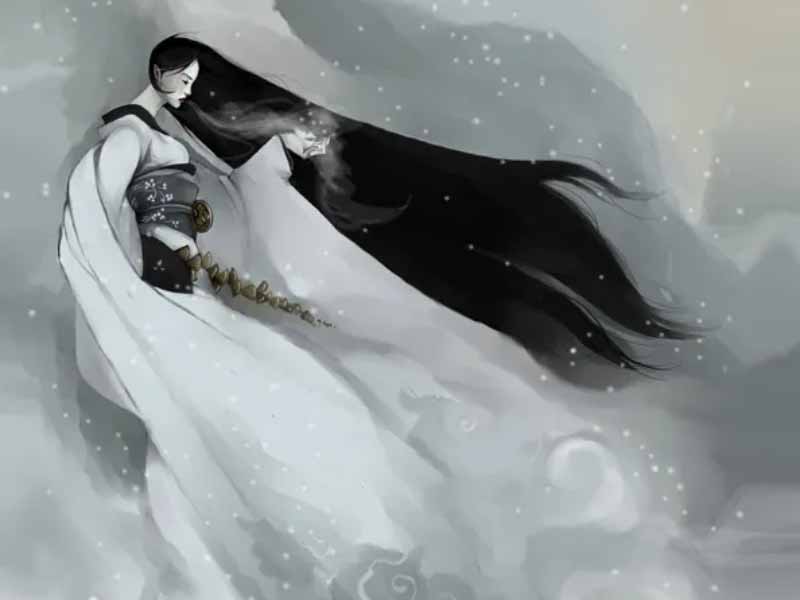
14. Yurei
There are several varieties of Yūrei. In most situations, the circumstances of their death determine how they seem. They are clad in white funeral kimonos or the uniforms of fallen warriors, and they have the same characteristics and attire as when they died or were buried. They occasionally have bleeding wounds that show how they perished.
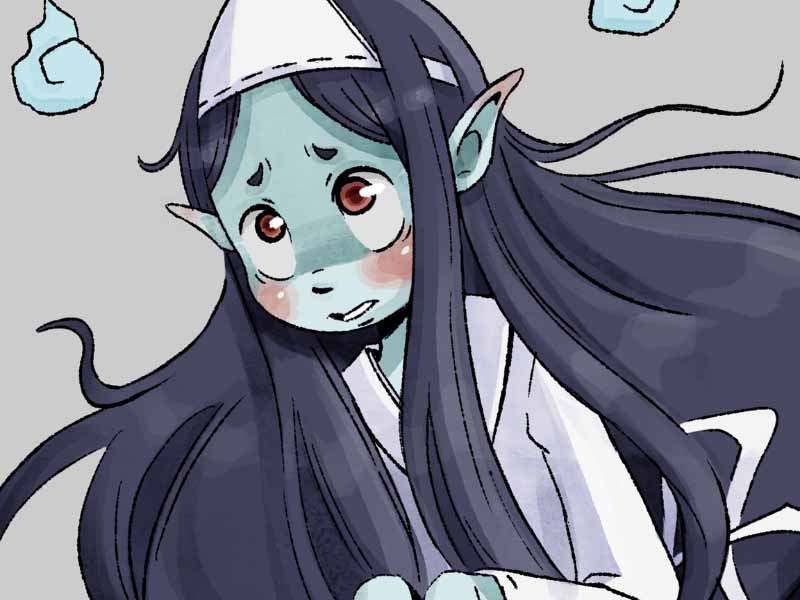
Their often long, unruly hair obscures their faces frequently and adds to their unsettling aspect. Their wrists are bare and their hands hang limply. The Yūrei are transparent and hardly discernible. They typically appear to have no feet because they are so faint.
15. Zashiki Warashi
House ghosts are called Zashiki Warashi. They love to cause trouble, are well-liked by everyone, and are thought to bring great prosperity and wealth to people whose homes they haunt. Rarely are these ghosts seen directly by humans. It is frequently hard to discern any characteristics beyond a hazy, childlike form. When spotted, Zashiki Warashi takes the form of five or six-year-old ghostly kids with flushed crimson cheeks.
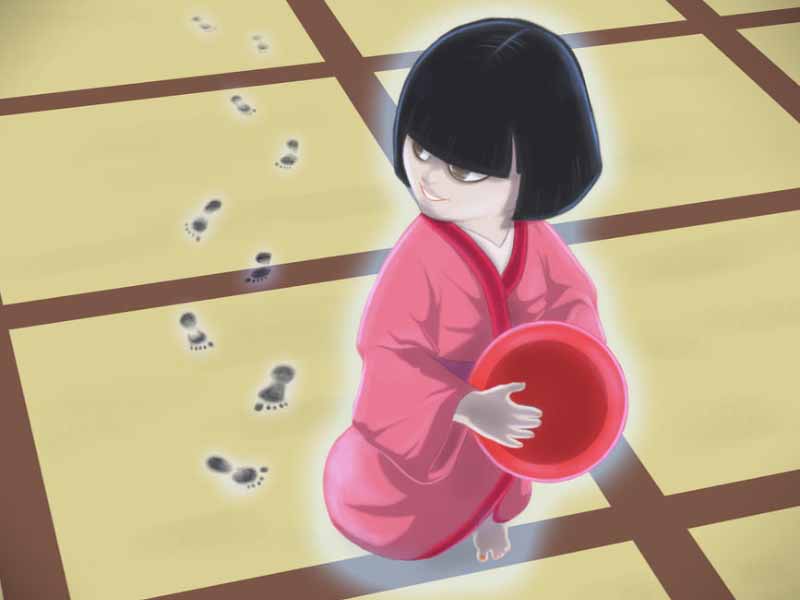
The girls are wearing patterned kimonos, while the boys are clothed in kid-sized warrior costumes. The females’ hair is either short and bobbed or long and tied back. They occasionally show up as wild, hairy, brutish characters in tales. Only kids and the home’s owners, according to legend, may see these ghosts. They are mostly mainly recognized for their jokes.
>>> Read more: How To Buy From Rakuten Japan? [Guide Step-by-step]
Conclusion
The yokai in Japanese culture is huge, and although it is growing in popularity, it is simple to become lost in the way Japanese yokai culture is being repackaged to appeal to contemporary audiences. There has never been a better opportunity to investigate the background of the mysterious and determine what exactly a yokai is, especially with the impressive advancements being made in the field of yokai studies in Japan today.
- Website: https://janbox.com.
- Email: [email protected].
- Facebook: https://www.facebook.com/janbox.com.en.

